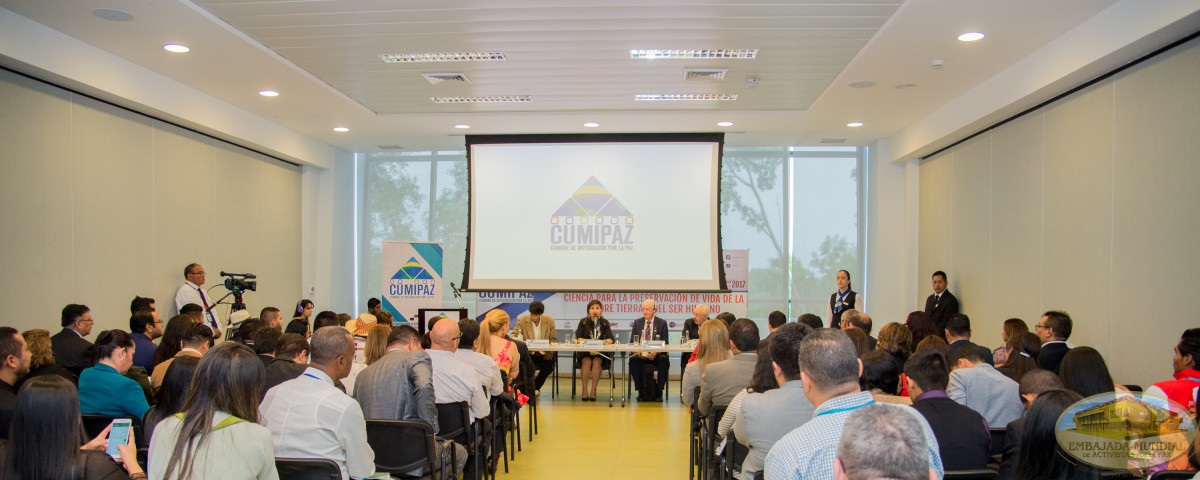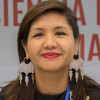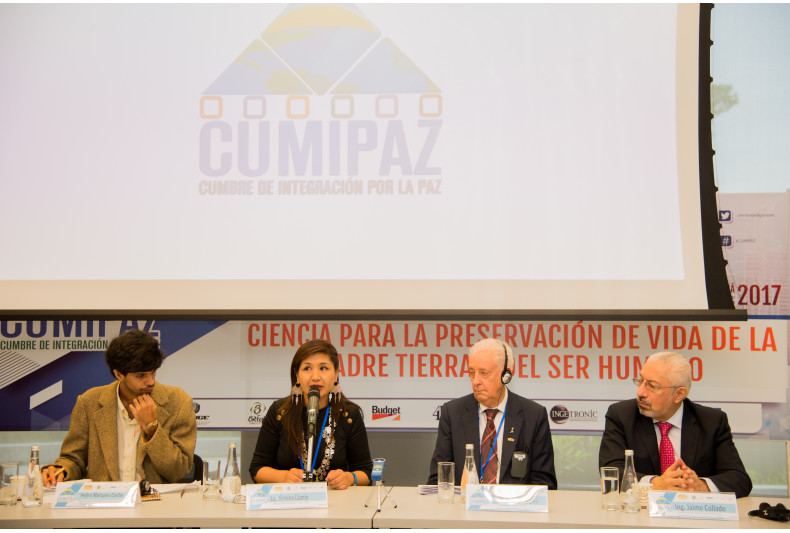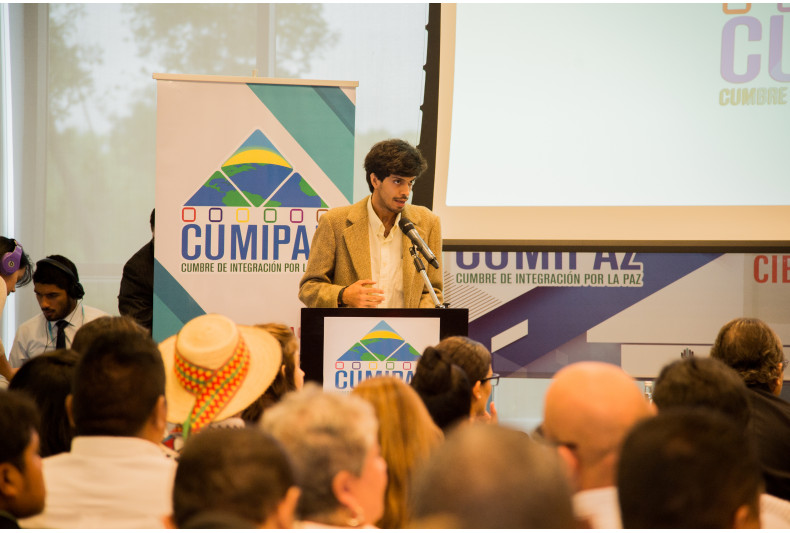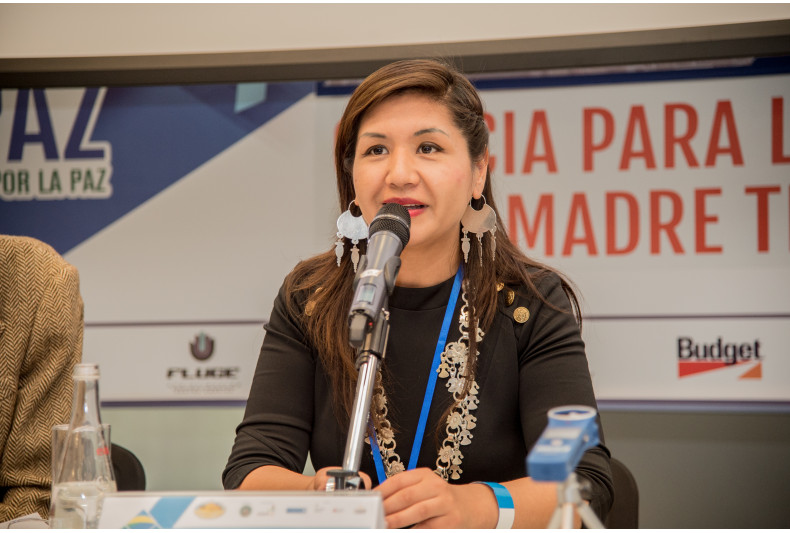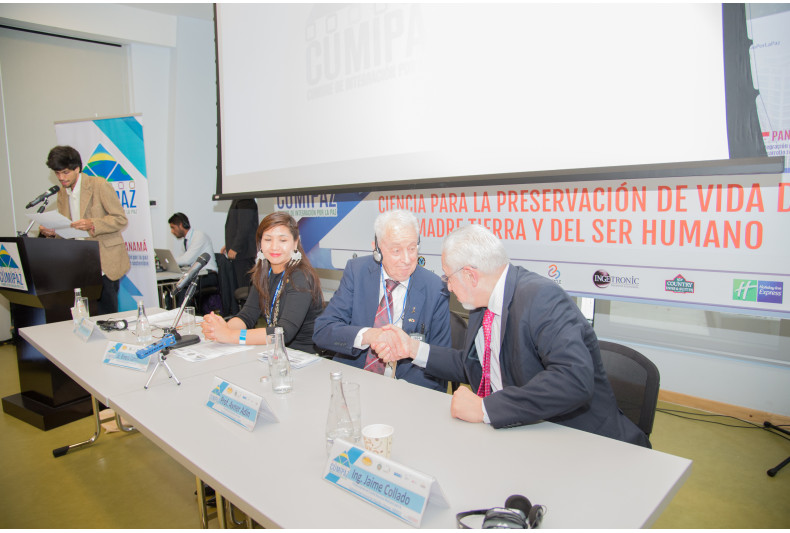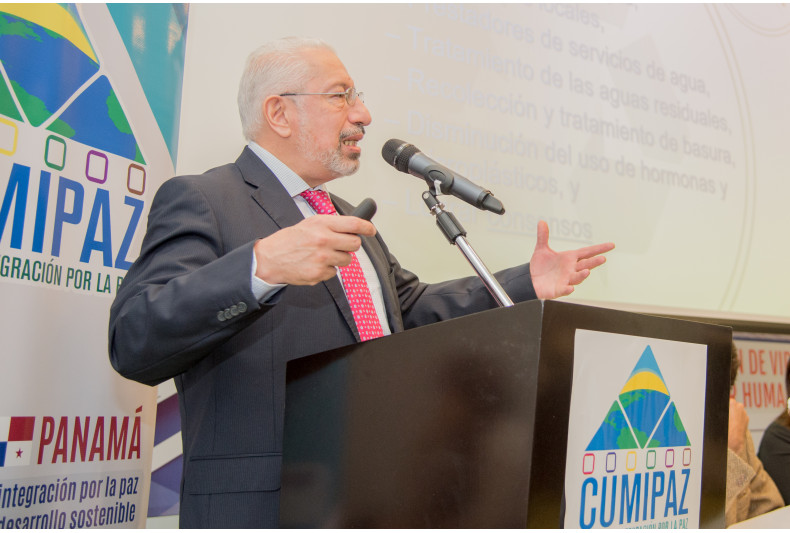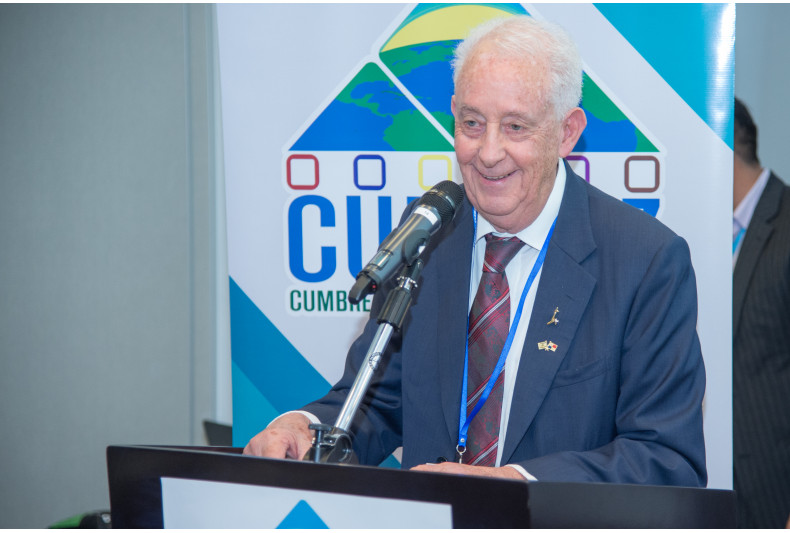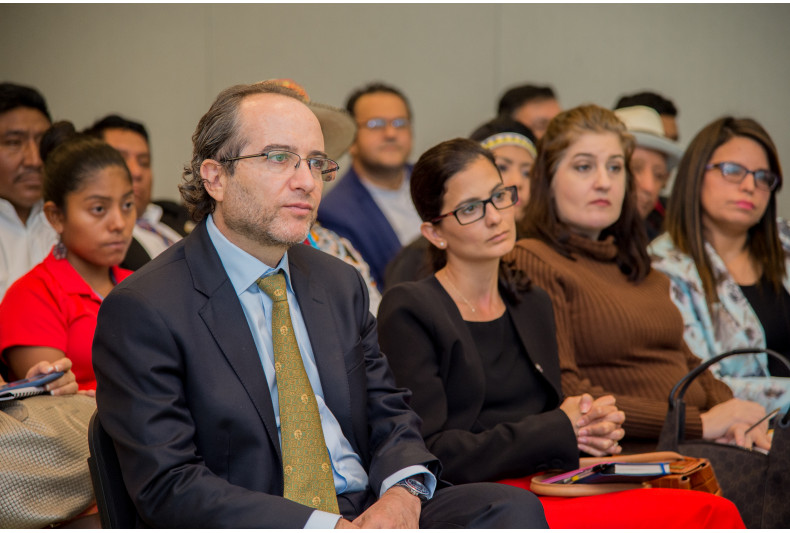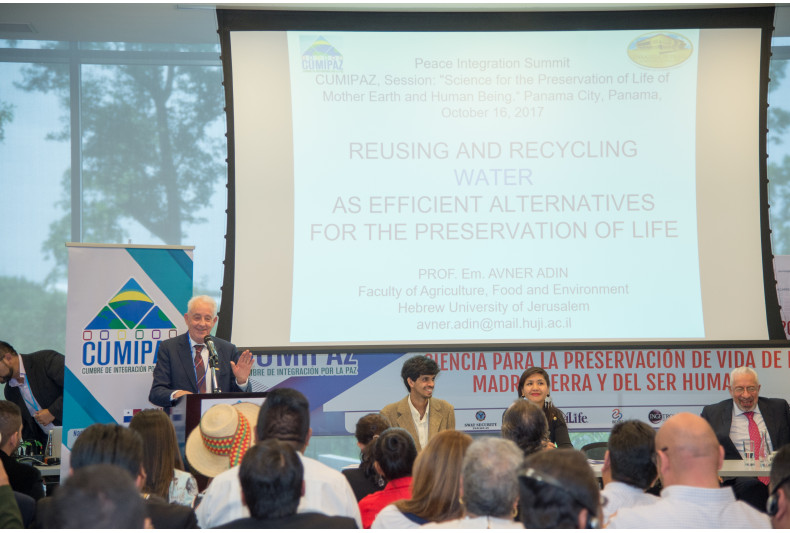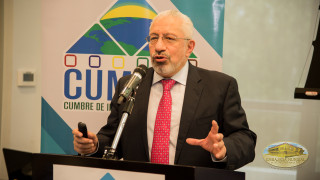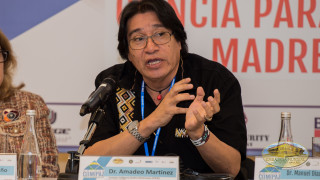How to preserve water resources
See GalleryScientific, technological advances and ancestral vision
The second working table of the Session on Science for the Preservation of the Life of Mother Earth and of the Human Being, within the 3rd edition of the Peace Integration Summit (CUMIPAZ 2017), developed the theme: Preservation of resources through scientific and technological advances, and the vision of indigenous peoples.
The objective of the table is to promote alternative knowledge of indigenous scientific, technological and ancestral knowledge, based on universal principles and values, human rights and Mother Earth. The panel consisted of three specialists, who presented their papers from a scientific, holistic and ancestral point of view.
Ximena Llamín, councilor in the municipality of Peñalolén in Chile, in her presentation "Vision of the indigenous peoples for the respect and the preservation of the waters", explained the suffering of indigenous people, due to the damage the land had endured, and she invited everyone to reflect on the reality of indigenous peoples.
"We must talk about the importance, not only of land, but of water, because it means life, water has energy and spirit," she said.
Jaime Collado, vice president of the Mexican National Committee for the International Commission of Irrigation and Drainage of Mexico, in his speech "Holistic recovery of bodies of water as essential resources of life", specified that the construction of solutions must be multisectoral.
He indicated that a public policy for environmental recovery is required: infrastructure, human resources, legal and financial systems.
For his part, Avner Adin, president of the Water Association. The Hebrew University of Jerusalem in Israel, in his participation: "Reusing and recycling water as an efficient alternative for the preservation of life", announced other alternatives for the production of drinking water:
"We can manufacture water to reduce water, we can make water by removing salinity; we can use groundwater, that way we can totally change the cycle." He also presented his technological proposals for the creation of drinking water through the crossing of sewage water with fresh water.
In conclusion, the three speakers came up with a similar approach: the contamination of bodies of water is multifactorial and related to geological aspects, to productive activities and to change the use of the land.
